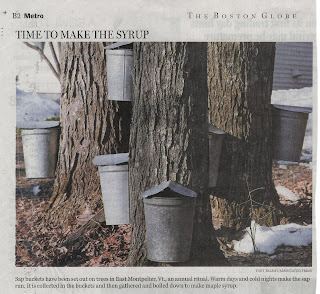 Our local "deli" meal: chicken, Cabot cheese, and homemade pesto sandwiches
Our local "deli" meal: chicken, Cabot cheese, and homemade pesto sandwicheson Iggy's bread, with my own pickles and sweet potato chips. Amazing!
After months of eating sweet potatoes 1000 ways, I found a new way to eat them: as chips! We have a long tradition of eating "chip-and-dip" in our family, so this was a dangerous thing to try because I knew they would be very good and very addictive. I was right. They are easy to make and taste delicious, and were the perfect accompaniment to our deli-style dinner last night!
To make sweet potato chips:
 1) I left the skin on the potatoes after a good scrubbing and used the Cuisinart slicing blade to make the very thin sweet potato slices.
1) I left the skin on the potatoes after a good scrubbing and used the Cuisinart slicing blade to make the very thin sweet potato slices. 2) I heated a couple of inches of vegetable oil to 325 degrees in a cast iron pot, and used a thermometer to monitor the temperature. The temperature can rise and fall very quickly, so needs careful attention.
2) I heated a couple of inches of vegetable oil to 325 degrees in a cast iron pot, and used a thermometer to monitor the temperature. The temperature can rise and fall very quickly, so needs careful attention. 3) I cooked these in batches of 10 until they were golden brown, drained them on paper towels, and then tossed them with Kosher salt. They were amazing and disappeared in seconds! Next on the agenda: perfecting the dip.
3) I cooked these in batches of 10 until they were golden brown, drained them on paper towels, and then tossed them with Kosher salt. They were amazing and disappeared in seconds! Next on the agenda: perfecting the dip.








